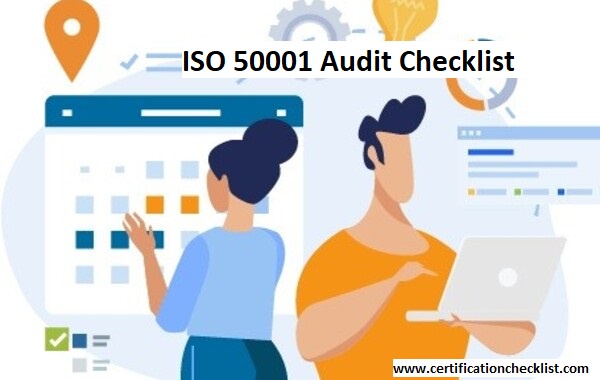This ISO 50001 audit checklist is a self-assessment tool that allows an organization to determine whether it complies with ISO 50001, and if not, what improvements are required to achieve compliance. It can also be used to conduct an internal self-assessment of your organization's energy management system (EMS) and identify improvements that should be implemented to acquire ISO 50001 certification.
ISO 50001 Audit Checklist
ISO 50001 suggests the best practices for Energy Management Systems. It was designed to help companies in data centres enhance their energy performance and decrease their carbon footprint. The good news is that BSI published an ISO 50001 audit checklist in May 2017. This new audit checklist will replace the previous ISO 50001 and ISO 14001 audit checklists.
ISO 50001 is an energy management standard that focuses on how to save energy. It was created for data centres of various sizes and may be used by any company that wants to use power more efficiently, save money, and help the environment. The ISO 50001 is a checklist that your firm must follow to evaluate how well your data centre uses energy. This checklist will assist you in determining whether your data centre is utilising energy efficiently and what areas require improvement.
The Main Goal of this ISO 50001 Standard
- To decrease the overall depletion of electrical power of the companies
- Reduce pollution by lowering the use of fossil fuels;
- Increase production and quality;
- Increase availability
- Boost client happiness by exceeding their expectations.
ISO 50001 Audit Planning
The first stage in this procedure is identifying who will do the audit. An audit involves a large number of personnel who are knowledgeable about the facilities, such as security officers, head engineers, and maintenance workers. Additionally, your team must include a supervisor who ensures that everyone adheres to ISO 50001.
To assist you in preparing for an ISO 50001 audit, we've produced a checklist of questions that your auditor will ask during the assessment process:
- Is there anything in the organization that could have an impact on data centre operations? If so, how are they dealt with?
- What exactly is a "Data Centre?"
- What criticality levels and power classes were allocated to which equipment/components?
- What is your Data Centre’s top three goals and objectives?
- What are your key focus areas in your Data Centre?
- What is your thinking behind employing redundant equipment? How do you keep such components in good condition?
- What was the timetable for replacing ageing old components with modern technology? What made you decide to upgrade now?
- What kind of hardware do you employ? Are you using the most recent versions with the most recent upgrades?
Energy Analysis
The Energy analysis is divided into three sections: Energy Efficiency Audit, Energy Accounting, and Environmental Impact Analysis.
The auditor will go over your organization's energy management documents, such as standards, practices, procedures, policies, and ISO 50001 auditor training materials. The auditor will also evaluate your data centre’s equipment, processes, measurement, and reporting systems. They may also sample representative equipment within the data centre to ensure that it is performing as planned.
During the audit, the auditor will document any deviations from good industry practices or best practices discovered. These items should then be addressed on a remediation plan that you will prepare with the auditor during the final stage of the audit process.
Environmental Assessment of Data Centres
The Data Centre Environmental Damage Analysis (DC EIA) is a non-intrusive audit used to identify the sources of environmental damage and potential mitigation measures. It is built on the concepts of continuous development and uses an ISO 50001:2011 framework. The ultimate goal is to improve a data centre’s environmental performance by identifying the sources of its influence, implementing methods to mitigate it, and continuously evaluating and improving its performance over time.
Auditing your organization's management systems against the ISO 50001 standard is an effective approach to demonstrate to consumers and environmental protection organizations that you are committed to being a green firm. Many organizations that have recently undergone ISO 50001 certification audits have seen considerable growth in their business. Does this imply that you can read a few checklists, fill in the blanks, and expect comparable results? To comply with ISO 50001:2018 standards, data centres must keep thorough records of waste material generation, composition, management, and disposal.


No comments yet